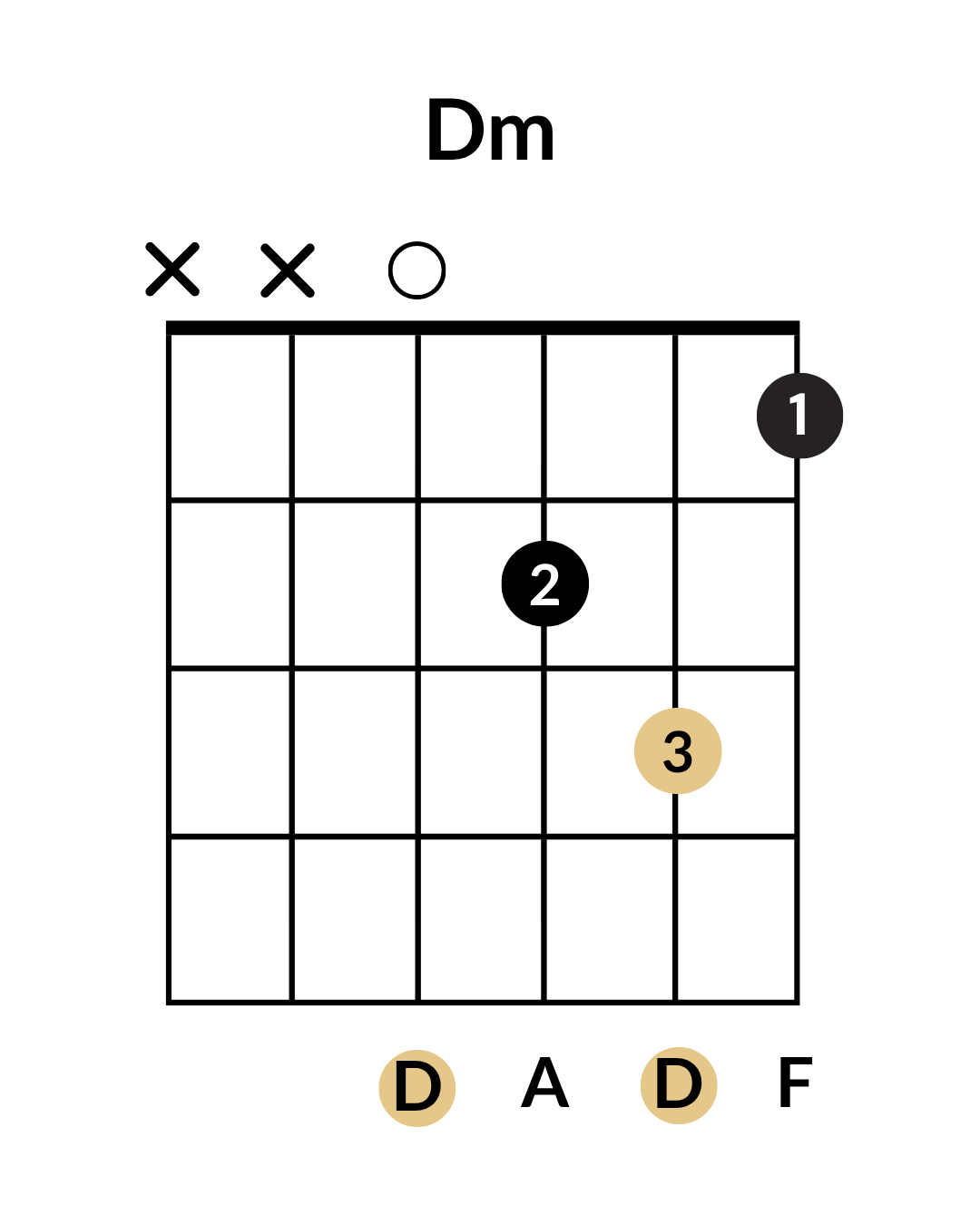The D natural minor scale contains one flat (Bb), and its relative major is F major.

Why Play in D Minor?
D minor is great for expressive solos, fingerstyle pieces, and emotionally powerful songs. It’s also useful for exploring classical and baroque guitar music, where it’s frequently used.
Famous Songs in D Minor
- “Stairway to Heaven” – Led Zeppelin (intro and verse passages)
- “The Sound of Silence” – Simon & Garfunkel
- “While My Guitar Gently Weeps” – The Beatles
- “Scarborough Fair” – Traditional/Simon & Garfunkel
D Minor Scale
The D natural minor scale includes the following notes: D – E – F – G – A – Bb – C – D
This scale is the foundation for melodies, solos, and harmonies in the key of D minor. It's also the parent scale for its harmonic and melodic variations.

D Harmonic and Melodic Minor Scales
- D Harmonic Minor: D – E – F – G – A – Bb – C# – D
- D Melodic Minor (Ascending): D – E – F – G – A – B – C# – D
- D Melodic Minor (Descending): D – C – Bb – A – G – F – E – D
Harmonic minor adds tension with a raised 7th (C#), while melodic minor smooths melodic lines by raising both the 6th (B) and 7th (C#) when ascending.
Chords in the Key of D Minor
These are the diatonic chords built from the D natural minor scale:
- Dm (i)
- Edim (ii°)
- F (III)
- Gm (iv)
- Am (v)
- Bb (VI)
- C (VII)
Using the harmonic minor, the v chord (Am) is often replaced with A major (V) for stronger resolution.
Popular Chord Progressions in D Minor
- i – iv – v: Dm – Gm – Am
- i – VI – III – VII: Dm – Bb – F – C
- i – iv – V – i: Dm – Gm – A – Dm
Cadences in D Minor
- Perfect Cadence: A – Dm (harmonic minor)
- Plagal Cadence: Gm – Dm
- Deceptive Cadence: A – Bb

Fingering the D Minor Chord on Guitar
The open D minor chord is a staple shape:
- Place your index finger on the 1st fret of the high E string
- Place your middle finger on the 2nd fret of the G string
- Place your ring finger on the 3rd fret of the B string
- Strum from the D string down (do not play the low E and A strings)
D Minor Chord Attributes
- Intervals: 1 – b3 – 5
- Notes: D – F – A
- Chord Symbols: Dm, Dmin
Tips for Practicing in D Minor
- Use arpeggios and scale patterns to internalize finger positions.
- Practice both natural and harmonic minor for versatility.
- Experiment with chord inversions and voicings across the neck.
- Combine chords with melody to develop musical phrasing.
Conclusion
The D minor key is a rich and expressive territory for guitarists. With its emotive sound and wide application across styles, it’s essential for deepening your musical expression.
Learn and Play with Fretello
At Fretello, we help you unlock your full potential. With structured lessons, scale exercises, and creative challenges, mastering keys like D minor becomes both effective and enjoyable.